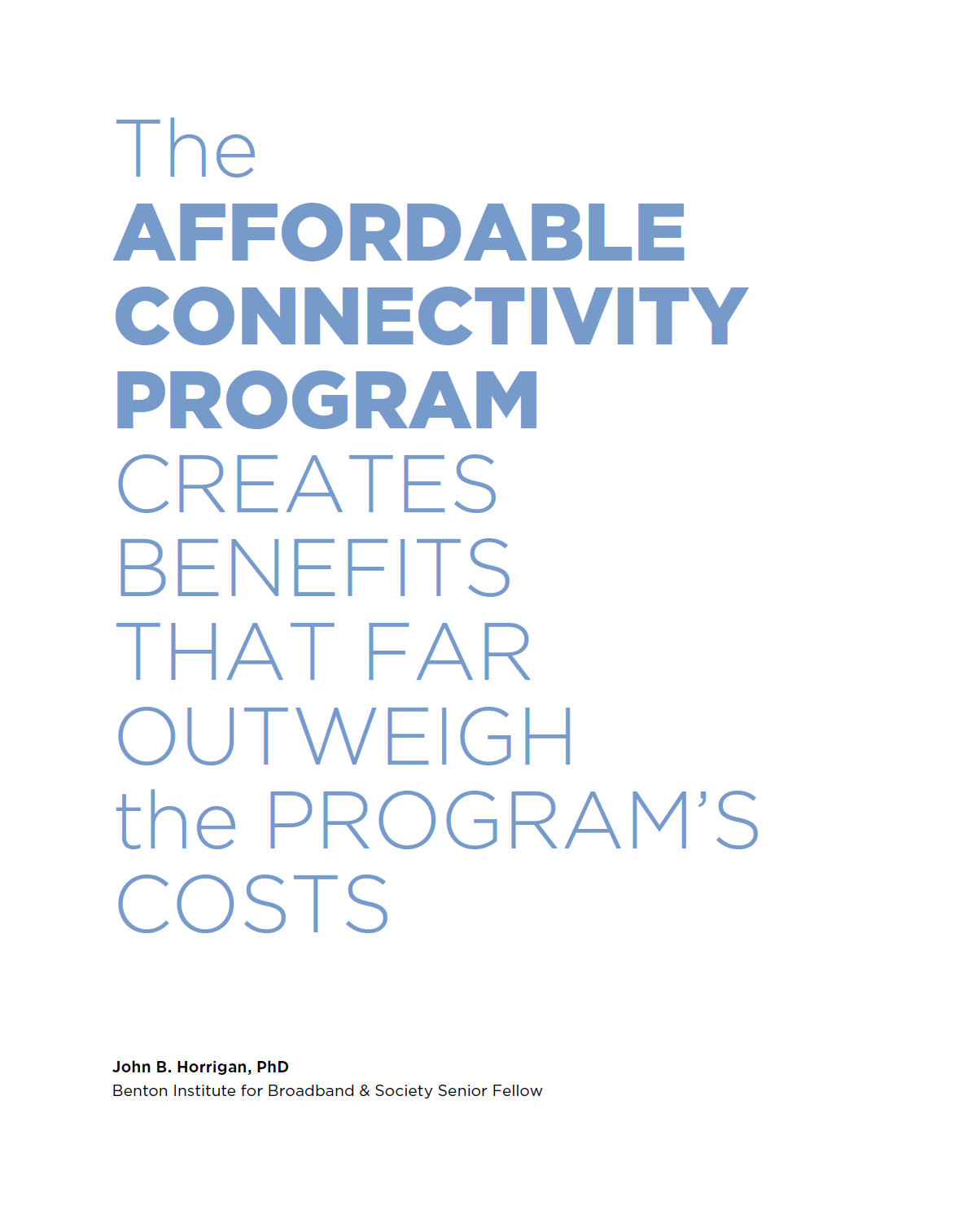The Affordable Connectivity Program Creates Benefits that Far Outweigh the Program's Costs
Analysis written by Benton Senior Fellow John Horrigan
The Affordable Connectivity Program (ACP) raises new questions about the economic impact of broadband. Does the internet access that ACP subsidy enables create financial benefits for subscribers that might not otherwise happen? And do those benefits outweigh the program’s cost?
In this brief, we analyze the economic impact of this program through the lens of financial benefits for subscribers. Does the ACP subsidy create financial benefits for subscribers that might not otherwise happen? Do the benefits outweigh the program’s cost?
Addressing these questions means understanding two things:
- Establishing how ACP impacts the levels and consistency of home broadband subscriptions for low-income households.
- Specifying the likely benefits for low-income households that take advantage of this connectivity.
The analysis that follows uses existing data on ACP enrollment patterns, as well as research on the impact of broadband adoption on households’ economic prospects, to develop a benefit-cost assessment of the ACP.
This exploration finds that every dollar of ACP subsidy returns nearly two dollars in impacts to those using the program. The ACP generates $16.2 billion in annual benefits, roughly twice the yearly cost of the service subsidy. These benefits fall into two categories: employment effects that boost household income; and convenience effects, e.g., time saved from shopping online as well as having access to a greater variety (or quality) of goods.
The ACP offers a $30-per-month discount on internet service plans for low-income households who meet specific eligibility criteria. The pandemic showed not only that many households lacked home internet subscriptions but also that economic disruption causes some low-income households to lose service as their budgets tighten. Among those without service or subject to disconnection, surveys showed that sizable numbers of lower-income households express worries about the affordability of service. The Federal Communications Commission (FCC) established the program in 2021 with the primary goal of reducing the digital divide for low-income consumers. In a short time, the program (including its predecessor the Emergency Broadband Benefit, or EBB, program) has subsidies for 23.3 million households. Despite numerous calls and efforts to extend it, the program is currently set to expire on May 30, 2024.
With the ACP’s future very much in doubt, this analysis underscores how the program is much more than a fix for the digital divide. By getting more people online and offering more consistent connectivity for low-income households, the ACP allows the internet to open doors to economic advancement and social inclusion for people with low socioeconomic status. In that way, the ACP helps advance the promise of universal service, namely, that there is a public good to having all citizens connected to information and communications networks.


